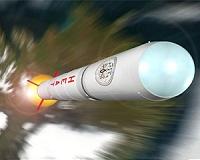 |
Bonn, Germany (SPX) Aug 26, 2010 Unlike its predecessor, the experimental sharp-edged spacecraft SHEFEX II (SHarp Edge Flight EXperiment) will be actively controlled during its re-entry into the atmosphere. The German Aerospace Center has developed a custom aerodynamic flight control system for SHEFEX II, which will be used to control the craft as it returns to Earth. At the heart of the canard control system, developed by researchers at the DLR Institute of Flight Systems in Braunschweig, are control surfaces - the canards - on the front section of the research vehicle, which can be used to actively control the vehicle. Initial ground tests were successful; now the sub-module is ready for integration into SHEFEX II and further testing.
Extreme aerodynamic and thermal loads The canard control system can automatically adjust the position and flow conditions of the re-entry vehicle - in the same way that the control surfaces on a plane can be angled to change its attitude. However, the conditions at altitudes of 100-20 kilometres - where the steering fin system is active - are quite different. "We are at the limits of technical feasibility here," explains Koch, adding: "We are flying and taking measurements in the thermosphere, mesosphere and stratosphere. Above 100 kilometres, there is not an absolute vacuum, but the air there is so thin that aerodynamic forces cannot affect the attitude of the vehicle." The new steering fin system is exposed to extreme aerodynamic and thermal loads. The components must withstand heat, large accelerations and high aerodynamic loads. These would cause standard components to break apart and burn up. Re-entry systems are amongst the most advanced technologies. They have to function reliably in a very inhospitable environment. SHEFEX II will reach speeds of almost three kilometres per second during re-entry - a speed at which you could get from New York to Washington DC in 130 seconds. The canard module - that is, the hardware - therefore has to be sufficiently robust to withstand such extreme conditions. Yet at the same time, it needs software on board that can work reliably throughout the demanding experimental mission, and bring the vehicle back to Earth in a controlled manner.
SHEFEX II launch planned for 2011, in Australia The canard module consists of the following components: onboard computer, actuators, seals, power supply, cabling, structure and software. These individual components have had to undergo numerous assessments and tests, for example vacuum tests, vibration tests, functional and performance testing and mechanical tests. The software was also tested on the ground, in simulations. Results to date indicate that the steering fin system has achieved the necessary level of maturity for the next set of tests, on the complete system. The final stage - testing the entire system - will take place at DLR Oberpfaffenhofen. In 2011, SHEFEX II will be launched to a height of over 200 kilometres from Woomera, in Australia. For the DLR researchers in Braunschweig, this is when evaluation of the intensive flight test begins. Then, they can properly see whether all the calculations and tests agree with reality and the complete system functions correctly under the harsh conditions encountered when re-entering Earth's atmosphere. The entire SHEFEX II test will last around ten minutes, and the duration of the DLR flight systems engineers' test will occupy less than 60 seconds of this. The idea behind the SHEFEX programme is to conduct test flights as cost-effectively as possible, in order to try out new re-entry technologies. SHEFEX II is a German national programme.
Share This Article With Planet Earth
Related Links DLR Institute of Flight Systems Space Tourism, Space Transport and Space Exploration News
 Ready for 'Danes in Space'?
Ready for 'Danes in Space'?Copenhagen, Denmark (UPI) Aug 24, 2010 Astronauts, cosmonauts and even Chinese Sinonauts may soon have company in space, two Denmark engineers say - so get ready for the Danonauts. Self-employed engineers Kristian von Bengtson and Peter Madsen are preparing a test launch their hand-built Hybrid Exo Atmospheric Transporter, or HEAT 4 rocket, from a barge off the wind-swept Danish island of Bornholm before mid-September, Brit ... read more |
|
| The content herein, unless otherwise known to be public domain, are Copyright 1995-2010 - SpaceDaily. AFP and UPI Wire Stories are copyright Agence France-Presse and United Press International. ESA Portal Reports are copyright European Space Agency. All NASA sourced material is public domain. Additional copyrights may apply in whole or part to other bona fide parties. Advertising does not imply endorsement,agreement or approval of any opinions, statements or information provided by SpaceDaily on any Web page published or hosted by SpaceDaily. Privacy Statement |